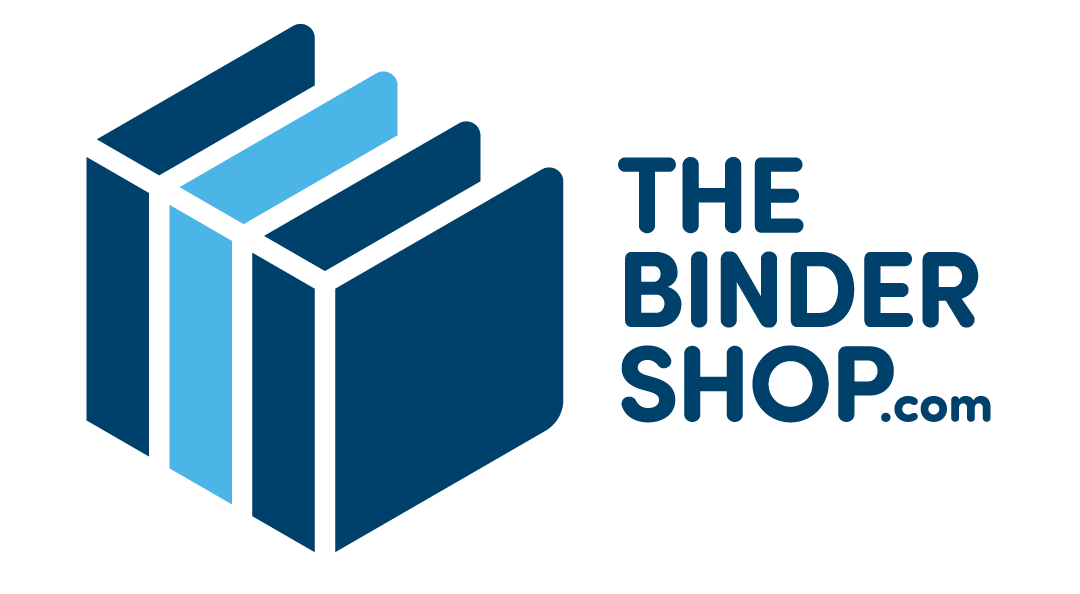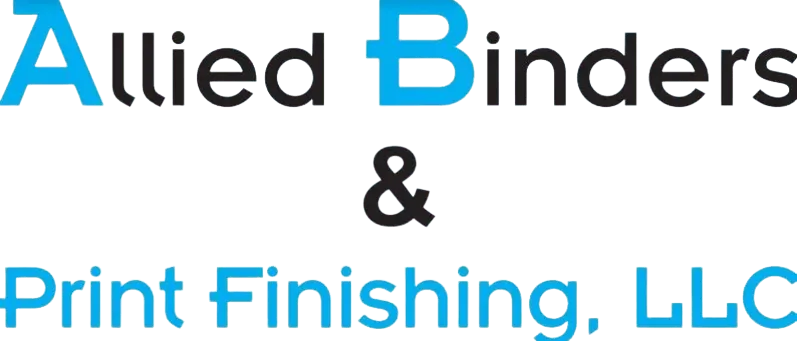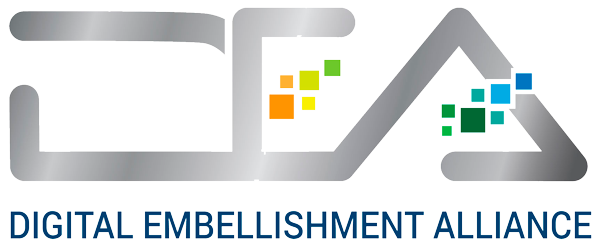FREQUENTLY ASKED QUESTIONS (FAQS)
PRODUCT FAQS
What material choices are available for casemade binder covers?
Paper, cloth or leather.
What is a European Hinged Binder?
A European Hinged binder (Euro Hinge) is defined based on the shape of the spine, formed by compressing board with a mechanical hinger. The 3 types of spines available are: Flat, Semi and Round Back. Euro-hinged binders are popular because 4-color process artwork can run across the spine hinges with no interruption to graphics. They are built with one piece of board that increases durability.
What do you measure to determine the capacity of a round ring?
Measure horizontally across the inside diameter of the metal ring.
What do you measure to determine the capacity of an angle D ring?
Measure along the straight edge of the metal ring from just before and just after the curve.
What do you measure to determine the capacity of a D ring?
Measure along the straight edge of the metal ring from just before and just after the curve.
What is the term used when measuring the thickness of vinyl and other materials.
Gauge.
What is the term used in measuring board thickness?
Point.
What are the two types of post metals?
Trojan and Qa-Can-Vin.
What type of corners do vinyl binders have?
Round corners.
What type of corners do casemade binders produced on the automated Crathern equipment have?
Square corners.
What are some ways to decorate directly on vinyl?
Screen-print spot Pantone color, foil stamp and/or deboss, appliqué, offset/litho, and direct digital.
What are your most commonly used grain finishes for stock binders?
We stock French Calf and Suedene (Suede) vinyls; however, many other finishes are available to order.
What is the difference between a clear overlay binder and a pictorial binder?
Both clear overlay and pictorial binders have a clear piece of vinyl on the outside of the binder. Clear overlay binders have an opening at the top, allowing easy insertion and removal of cover sheets. Pictorial binders are permanently sealed at the top, providing more protection to the cover sheet.
Is the glossy clear material the only choice I have for clear overlay or pictorial binders?
Clear, glossy overlay is the only material choice for stock binders. Custom binders can be produced in a number of ways, including orange peel or matte clear.
I need a binder to hold standard 8 ½” wide by 11” tall paper. How do I indicate the sheet size on my order?
Select the 11 x 8 ½” sheet size. In the binder industry, the binding or punched side measurement is listed first. If the punched side was on the 8 ½ ” side, it would be listed as 8 ½ x 11” sheet.
Is the glossy clear material the only choice I have for clear overlay or pictorial binders?
Clear, glossy overlay is the only material choice for stock binders. Custom binders can be produced in a number of ways, including orange peel or matte clear.
What material is best suited for outdoor use? Can any withstand temperature variations, such as in the trunk of a car?
Many different materials are available that can withstand rough environments and temperature extremes, but the most durable is polyethylene. Called “poly” at Binders.com (VIP/ATC), this material is made to resist water, grease, and anything else you can throw at it. Poly can be produced in a variety of colors, thicknesses, and finishes.
Can Binders.com (VIP/ATC) help me determine the best packaging solution for my items?
Yes, we are happy to assist with product development, design, and other creative elements. We have specialists available just for this purpose.
ART | PRINTING FAQS
What are screen tints or halftones?
Screen tints and halftones are ways of creating many shades of color form a single ink color. This is achieved by breaking down artwork into dots of varying size. The term “screen tint” is generally used in reference to solid and graduated percentages of color. “Halftone” is generally used in reference to grayscale images such as photographs.
What is the lines per inch (LPI) used for screen printing?
Our standard line screen is 65 LPI (lines per inch). When printing small areas of halftones with fine detail, we may choose to use a higher LPI line screen in order to achieve better detail.
What is the lines per inch (LPI) used for offset/litho printed products?
150 LPI.
What screen percentages do you recommend for solid tints and gradients in screen printing?
We recommend solid tints between 15% and 85% and gradients between 5% and 95%.
Why do you recommend against screen printing large panels of screen tints?
In the process of screen printing, specks and flaws in printing large panels are easily visible. In some cases we recommend printing an additional lighter shade of the same solid color.
What is a bleed?
A bleed is when artwork or printing falls off the edge of the finished product. In the case of binders, artwork through the spine hinges is also considered a bleed. A bleed requires printing on oversize material and then trimming, welding, or wrapping afterwards.
How much bleed do I need in artwork?
5/16” for vinyl binders, 5/8” for casemade/turned edge products, and 1/8” for paper prints. Refer to product templates for specifications.
Can my artwork bleed if it’s foil stamped?
It depends on the product. We can bleed foil on paper and casemade/turned edge products. We cannot bleed foil off vinyl products.
In printing, what is a trap?
When colors overlap or adjoin, the more opaque color must overlap the less opaque color to allow for movement on printing press equipment. Hence, the more opaque color “traps” the less opaque color. For standard offset printing on paper, a trap of about .03 pt. is required. For screen printing on vinyl, a minimum trap of .9 pt. is required.
Do I have to set traps in my electronic file?
No, you don’t have to set traps. We will check your files and adjust traps to meet our requirements.
What is a “choke and spread”?
When a light color is screen printed on a dark base material, white ink can be applied first and then overprinted with a light color. Using this method, we can produce a clean bright color on darker substrates. The white ink is made thinner (choked) and the lighter color is made slightly fatter (spread) to ensure proper registration on press. The finished product will have a slightly darker outline around artwork where lighter ink prints over darker base material. Not all artwork can be printed using this method. All artwork must be approved by our art department prior to production.
What is an appliqué and can any artwork be reproduced using this method?
An appliqué is a method of applying decoration onto vinyl products. A special die is made by combining a cutting die and a sealing die into the shape of supplied artwork. Using this special die, a piece of vinyl is then heat-sealed onto a base vinyl—sealing the shape of the artwork onto the base vinyl. The excess surrounding vinyl is then removed, leaving the shape of the artwork. Not all artwork can be reproduced using this method due to the nature of the appliqué creation process. For this reason, all artwork must be approved by our art department prior to production.
What is the difference between a clear overlay binder and a pictorial binder?
Both clear overlay and pictorial binders have a clear piece of vinyl on the outside of the binder. Clear overlay binders have an opening at the top, allowing easy insertion and removal of cover sheets. Pictorial binders are permanently sealed at the top, providing more protection to the cover sheet.
What are your guidelines for foil-stamped artwork and type?
Very bold type and artwork does not work well with foil stamping due to the nature of the process. Types smaller than 12 point can be problematic—especially bold types. Bold type can run together, preventing small openings in the type from appearing in the finished product. When reverse type is used in foil stamping, the type must be open and bold in order to prevent plugging; roman types should be avoided. Solid areas exceeding 3 square inches should also be avoided because of difficulty getting consistent foil coverage.
What is considered heavy coverage when screen printing on binders?
Heavy coverage is when 50% or more of the binder is covered with ink.
Will I see a proof of my artwork prior to production?
Yes. Binders.com (VIP/ATC) offers a digital email proof, a paper fax proof, or a full-size laser-printed copy. For 4-color process orders, we provide an actual size color match proof after digital proof is approved. These proofs are provided at no additional cost. We also provide color smears (known as ink draw-downs in the printing industry) at no additional cost.
Are there any other proofs available?
We offer pre-production proofs that represent actual finished products. These require a special quote.
Will you provide a layout template?
Stock product templates are available online in .eps and .pdf format. Additionally, Binders.com (VIP/ATC) will supply templates for custom products.
PRODUCTION FAQS
What is a casemade binder?
Sometimes called a turned-edge or casebound binder, casemade binders are constructed from a non-vinyl cover material that is then wrapped around and glued to a board.
How is a vinyl binder made?
Vinyl binders are made using vinyl material surrounding a board placed in between the cover and liner materials. The vinyl is then heat-sealed with special dies in a dielectric machine, which uses heat and radio frequency waves to form a seal. This process requires no gluing.
What is the main difference between casemade and vinyl binders?
Casemade binders are generally made with a paper, cloth, leather, or canvas outer material that is glued to an unfinished board. The outer material wraps around the board edges, which is then covered by a liner glued to inside of the board. Vinyl binders have boards that are completely surrounded by vinyl, which is heat-sealed by a process that does not require glue.
What is a poly binder?
Poly binders are made with a hard plastic type material called polyethylene. The binders are made by die-cutting the shape of the binder and then scoring the spine hinges to create a backbone. Poly binders are extremely durable and can withstand high temperatures.
What binder decoration options are available?
Many decorative options are available, including screen-print, foil stamp, stamp/deboss, blind deboss, appliqué, offset/litho printing, and digital printing. Not all of these processes are suitable for every project, so check with the creative team at Binders.com to see which techniques best fit your needs.
What casemade binder decoration options are available?
Casemade binders have the following decoration options: screen print, foil stamp, stamp/deboss, blind deboss, offset/litho, digital printing.
What vinyl binder decoration options are available?
Vinyl binders have the following decoration options: screen print, foil stamp, stamp/deboss, blind deboss, offset/litho, digital printing (clear overlays), appliqué, appliqué entrapments.
What poly binder decoration options are available?
Poly binders have the following decoration options: screen print, foil stamp, offset/litho (on thinner gauges).
What is the function of our assembly department?
The main function of our assembly department is to insert metals into binders. The team also assembles latches, handles, and other production involving hardware onto binders.
What is a rivet?
Rivets, used to fasten the ring mechanism to the binder, appear as 2 small round pieces of metal on the outside of the spine or back cover of binders. Standard rivets are 5/16” in diameter. Rivets are normally mounted on the spine or back cover and can be hidden or exposed on the outside, depending on the type of binder. If rivets are exposed, printed artwork must be at least ¼” away from the rivets to avoid interference or overlap.
Which type of ring metals do not require rivets?
Prong bushing metal does not require rivets. This metal is designed to fasten to boards without the use of rivets, allowing the binder design to stretch uninterrupted across the cover.
What is the difference between a clear overlay binder and a pictorial binder?
Both clear overlay and pictorial binders have a clear piece of vinyl on the outside of the binder. Clear overlay binders have an opening at the top, allowing easy insertion and removal of cover sheets. Pictorial binders are permanently sealed at the top, providing more protection to the cover sheet.
What is a “color smear”?
This is also sometimes referred to a “draw-down.” It is a printed sample of customer-selected ink color and material options for customer review prior to production.
Is there a charge for “color smears?”
No, there is not a charge. Color smears can usually be completed within 24 to 48 hours.
What is the name of the automated equipment that constructs casemade binders?
Crathern.
What is a “handcrafted” casemade binder?
Casemade binders are considered handcrafted when they are constructed without automated equipment. Handcrafted casemade binders are created by hand using front, spine, and back boards.
What are the three types of European hinge options?
Flat, semi (euro-4), and round.
Is there someone at your production plant to check on my job?
Yes, we have Project Manager at our plant in Vincent, Alabama and NAPCO, North Carolina, to guide and follow your order through production.
SALES | COMPANY FAQS
Why does Vulcan offer so many products and a fulfillment service?
Our goal is to make our customer’s lives easier by providing one place for our customers to go for all their binder and packaging needs.
Will Vulcan store our order following production?
Vulcan offers a release/storage program and will store product for a maximum of 1 year after manufacture. We can also handle your fulfillment and shipping needs.
Help! Is someone available to help me with this project? I have no idea where to begin!
Yes, we have a team of people available to help you. Our field sales representatives will gladly come and lay out your project with you. Depending on your location, one of our telesales packaging experts is available to assist you. We’re happy to assist with product development, design and creative ideas. Our art department exists for precisely this purpose.
Is there someone at your production plant to check on my job?
Yes, we have Project Managers at our plant in Vincent, Alabama and NAPCO, in North Carolina to coordinate and follow your order through production. And our customer service staff are also based out of our production plant, providing the same service of following your order through every step of production.
Who owns Vulcan Information Packaging?
We are owned by NAPCO, Inc based in North Carolina. A premier packaging company service all of the United States and Canada.
How long has Vulcan been in business
Vulcan has been in business since 1947.
How was Vulcan started?
Vulcan was founded by Ebsco, Industries to manufacture single copy vinyl magazine binders to house EBSCO’s magazine subscriptions for medical waiting rooms.
Is Vulcan really located in the cotton fields of Alabama?
Yes, our manufacturing plant and headquarters is located in the rural town of Vincent, East of Birmingham, Alabama and we’re surrounded by cotton fields. Visitors are awed by the sight of such a large, state-of-the-art manufacturing plant in it’s unique setting.
Do you stand behind your product with a 100% satisfaction guarantee?
Absolutely. We believe that our customers deserve exactly what they ordered and the very best quality that can be produced.
I know you do work for large companies like Coca-Cola, Boy Scouts, Mercedes, American Express and others…will a small company like mine get the same level of service?
We hold high value to every single customer and provide the same level of great service to every order regardless of size. Everyone deserves the best.
What was the first product Vulcan manufactured?
Single copy vinyl magazine binders used to house EBSCO’s magazine subscriptions for medical waiting rooms.
I have some items I need to hold but can’t figure out how to build the package. Can Vulcan help?
Yes, Vulcan is happy to assist with product development,design and creative ideas. We have a staff in these specific areas for just this purpose.
Need help? Call now to speak with an expert.






